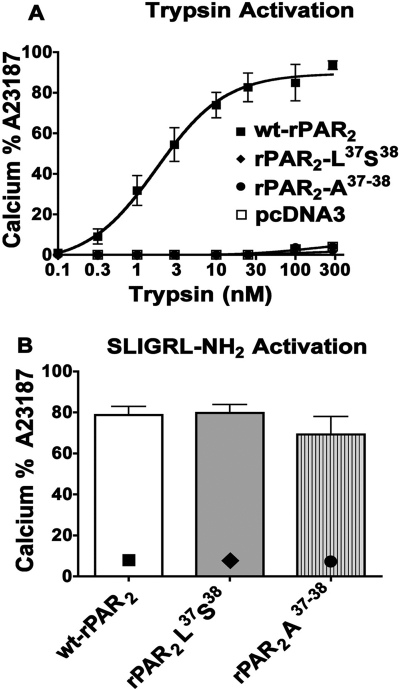Fig. 1.
Trypsin does not activate calcium signaling in the TL-mutant PAR2 receptors as it does in wt-rPAR2: comparison with activation by SLIGRL-NH2. A, concentration-effect curves for trypsin-triggered calcium signaling. Receptor-expressing KNRK cell lines (■, wt-PAR2; ●, rPAR2-Ala37–38; ♦, rPAR2-Leu37Ser38; □, pcDNA3) were exposed to trypsin at increasing concentrations and the elevation of intracellular calcium relative to the signal caused by 1 μM A23187 (% A23187) was monitored as described under Materials and Methods. Trypsin concentration-effect curve for calcium signaling (A) and calcium signaling (% A23187) (B) triggered by SLIGRL-NH2 (300 μM) in wt-rPAR2 (■), rPAR2-Leu37Ser38 (♦), and rPAR2-Ala37–38 (●) transfected KNRK cells. Values at each trypsin concentration (A) and in the histograms (B) represent the averages (± S.E.M., bars) for three or more independently conducted experiments.

